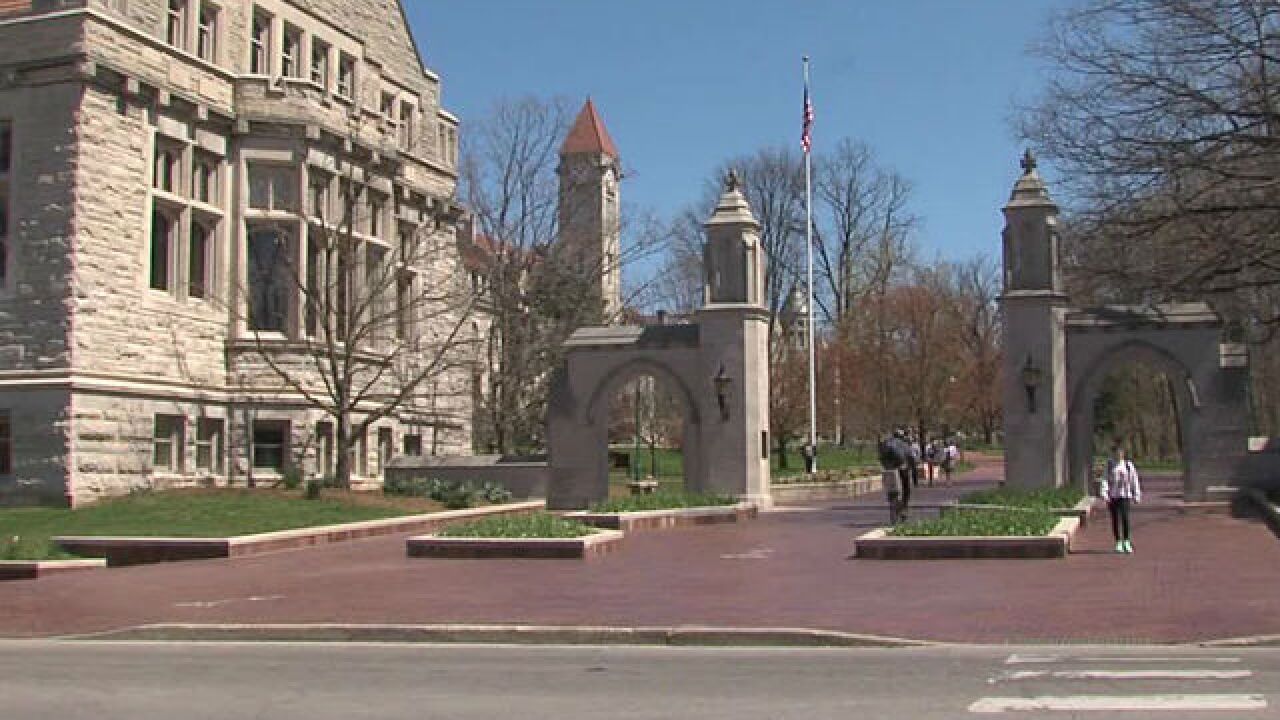BLOOMINGTON — It's a question college administrators across the country are wrestling with — what will the fall semester look like?
Colleges everywhere shut down in March, midway into the spring semester when COVID-19 became an overriding concern.
In Bloomington, Indiana University President Michael McRobbie is planning for the fall, without knowing exactly what to expect.
"Our faculty and staff have risen to the massive and unprecedented challenge of moving all teaching for our more than 100,000 students across our state from a largely traditional mode of instruction to all virtual classes." said Mcrobbie. "We now have more than four weeks of fully virtual education behind us, with just one week left in the spring semester. And I simply cannot say enough about IU's resilient students, who are the lifeblood of our campuses."
"We are very confident that IU will ultimately return to a full, in-person university experience. This is our overarching goal for every campus, and like everyone else I want that return to happen sooner rather than later! But the seriousness and uncertainty of the pandemic demands caution," McRobbie said.
"It would not be realistic or even responsible to promise a full resumption of in-person activity in the fall, as the best medical and public health evidence and projections tell us that the novel coronavirus will remain active to some degree, and that the potential for COVID-19 reoccurrence will remain with us until a vaccine is widely deployed," said McRobbie. "Thus, it is essential that we plan for multiple return scenarios in the coming academic year, including, but not limited to, an in-person experience.
Here are five scenarios for the 2020-21 academic year:
Scenario 1 is a return to in-person teaching and research in the fall. This, of course, is the scenario all of us would most prefer, but it is also highly unlikely." said McRobbie. "As experts have warned, it is likely we will need to continue social distancing and many other preventive measures to detect and protect against the spread of COVID-19 until a vaccine is widely deployed."
"This will mean that even a return to in-person teaching and research would require careful consideration of, among other measures, reconfiguring large lecture classes; re-engineering courses and performances that bring people into close physical contact; and modifying laboratory and studio practices to ensure proper distancing, numbers of people in gatherings and cleaning."
Scenario 2 is a "hybrid" reopening in the fall involving both in-person and virtual teaching and research. "At this point, this is the scenario we believe is the most likely, though this could change rapidly with some new positive or negative development," said McRobbie. "The balance between in-person and virtual teaching would emerge from the impact of continuing public health directives."
"Flexibility could take many forms. It could involve classes offered both in-person and virtually. It could also involve prioritizing some classes for in-person or for virtual instruction, based on their size, content or other characteristics; creating modular classes that are designed to include both in-person and virtual elements, or that can switch from one mode to another very quickly; rethinking the weekly schedule, to spread out larger classes, for example, to allow for smaller sections; or, most likely, some combination of these and other measures."
Scenario 3. In this case the pandemic remains so serious that the fall semester must be held virtually, but the school can resume hybrid operations in the spring.
Scenario 4: This involves the need to return to virtual operations in the spring after having begun hybrid operations in the fall.
Scenario 5: McRobbie describes this as the most difficult of all — virtual operations for the whole academic year.
Until a a vaccine is ready, McRobbie sees a need for:
- Continued social distancing.
- Fast and comprehensive virus testing and, prehaps, antibody testing.
- Therapeutics.
- Temperature and monitoring surveillance.
- Contact tracing.
Indiana University has formed a "restart committee" which will recommend when and under what conditions IU can restart its on-campus classes, research and other activities.
Other committees will chart a course for individual IU campuses outside Bloomington.
"We are still far from sure what form the next academic year will take, but it will almost certainly look and feel different," said McRobbie. COVID-19 will be with us this fall in some way, and perhaps longer, until a cure is uncovered."
To this end, I do not want to sugarcoat the situation with trite phrases or hollow optimism. Even under the best of circumstances, academic and research life at IU will not be the same for some time, and we will feel the repercussions of this pandemic for many years."



